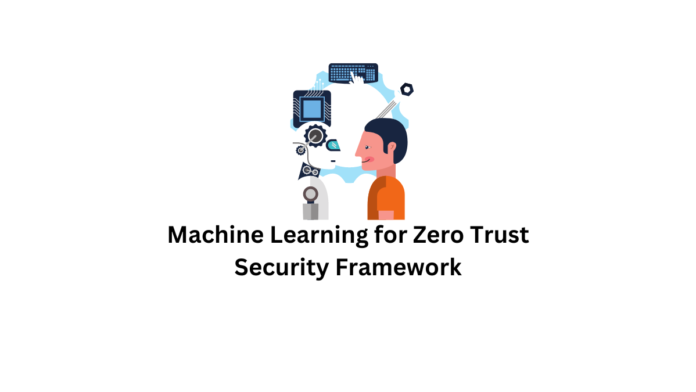Zero Trust architecture is a solution for uncontrolled access to network resources. It provides a model for every access request to undergo authorization and authentication before being given the right to use assets. More importantly, while legacy solutions give unhindered access to all resources after access has been granted, zero trust ensures access is only granted to specific resources needed for carrying out certain tasks. Furthermore, all activities are monitored within the network, without trust being reserved for specific entities, to uphold sanity and avoid every threat.
What is most important is the mindset embedded in the security culture. It is a modern approach to security. The security framework prescribes that every internal and external user within an enterprise network must first be authenticated, authorized, and continually monitored for steady security posture and validation before and during access to network resources.


Zero trust isn’t a specific tool or technology, but it is efficient and reliable if an organization’s new security culture is imbibed. By implementing it based on sensitivity and the identity of resources, you’ll limit the damage that could result from threat actors targeting your company. In addition, zero trust helps to enhance automated visibility and verification and assumes that a request is malicious and cannot be trusted until proven otherwise.
Secure Access Service Edge
Secure Access Service Edge (SASE) is a leading driving force propelling zero trust adoption. In fact, zero trust is a major component of the SASE architecture, and integrating both in your corporate network eliminates excessive trust once required to allow entities to connect and collaborate.
The SASE architecture is divided into networking and security aspects. The Secure Service Edge (SSE) covers the security side of the equation.


So, what is SSE (Secure Service Edge)? SSE is an emerging cybersecurity concept introduced by Gartner analysts and described as an assembly of integrated, cloud-centric security capabilities that facilitates secure web access, private apps, and Software-as-a-Service (SaaS) apps.
Some key components of the SSE-related security capabilities include Zero Trust Network Access (ZTNA), Cloud secure web gateway (SWG), Firewall-as-a-service (FWaaS), and Cloud access security broker (CASB).
The SSE features tools that suit dynamic network perimeters and guarding cloud assets. Software-Defined Wide Area Network covers the networking part while the SSE complements its functions with security cover. Varying network architectures determine the setup.
Zero Trust and Machine Learning
Also, machine learning is highly beneficial to automating the adjustment in access policies according to real-time analysis of behavioral patterns. It takes off repeated monitoring work from IT and security teams and the need to continuously review access requests manually.
Machine learning is revolutionizing Zero Trust Security in diverse ways, and here are three!
1. Machine learning makes it a reality, attaining security policy alignment at scale. It helps corporate network and security management teams keep pace with a fast-moving digital business’ need and flex and scale to support new business models.
Machine learning has also been shown to help assist user profiles and access based on the trend in behavior.
This process takes away IT staff’s bulk work of constantly reviewing and adjusting policies, as they focus on much better things that will enhance business growth faster and profitably.
In addition, end users do not have to bear the brunch of undergoing procedural step-up authentication once a prior abnormal behavior has been pin-pointed as typical behavior. Therefore, connected user policies and profiles are updated.
2. Machine learning provides enterprise networks the leeway to integrate risk-based security that can function in syn with the business as it grows.
Digital business owners now understand that “risk is security’s new compliance” and therefore put in place approaches that help comply with standard requirement policies.
Machine learning technology considered to assess user, behavioral, and device data for every access request helps to achieve a real-time risk score which can thereafter be used to determine access to requests—it could be to either block access, permit it, or step up the authentication process.
In evaluating every access request, machine learning engines process multiple factors, including the user attributes, location of the access request, time of day, browser type, endpoint device status, operating system, and unusual changes in recent privilege.
Machine learning algorithms are also scaling to detect and uncover every active unusual command, unusual privileges requested and used, unusual accounts deployed, unusual resource access histories, and others. With this approach, credential attacks are prevented—-an act that makes up about 81% of data breaches involving hacking processes.
3. Machine Learning brings an increased ability to adapt and apply what has been learned, including knowledge and skills, into the authentication, increased user adoption, and streamlining the experience.
The risk-based machine learning and authentication technology help to achieve a transparent and non-intrusive security approach.
A key hindrance to companies integrating the multi-factor authentication approach has been the perceived effect it has on the agility and productivity of employee users. A study by Dow Jones Customer Intelligence and Centrify reveals that 62% of CEOs think multi-factor is non-progressive, nonuser-friendly, and difficult to manage. And 41% of technical officers, including CTOs, CIOs, and CISOs, agree with the assessment.
For instance, the process of inputting a transmitted code that has already been delivered via SMS in addition to the already supplied username and password is considered cumbersome. However, technological advancement is removing some of those objections to offering a more user-friendly experience.
This includes evacuating the necessity of manually inputting a one-time password onto the endpoint by allowing the user to click a button on their smartphone. But then, some users still think this process is frustrating, too, even if it is quicker and simpler.
So, this is where machine learning contributes to reducing the exposure to step-up authentication over time as the engine learns and adopts new patterns from user behaviors.
Conclusion
Machine learning with zero trust is allowing digital businesses to progress on the path of growth while safeguarding patented ideas and intellectual property. Furthermore, integrating machine learning technology in the zero trust model also helps provide real-time security while relieving IT security teams of the manual process of authentication and the cumbersome tasks accompanying it.











